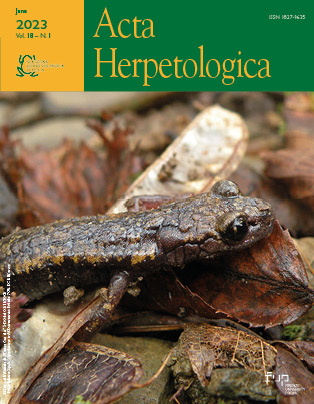Threats of the emerging pathogen Batrachochytrium salamandrivorans (Bsal) to Italian wild salamander populations
Published 2023-01-12
Keywords
- chytridiomycosis,
- conservation,
- emerging infectious diseases,
- mitigation,
- real-time PCR
- Amphibians,
- acclimation, acclimatization, body temperature, substrate temperature, static trial, thermal biology ...More
How to Cite
Copyright (c) 2023 Lorenzo Dondero, Giorgia Allaria, Giacomo Rosa, Andrea Costa, Gentile Francesco Ficetola, Roberto Cogoni, Elena Grasselli, Sebastiano Salvidio

This work is licensed under a Creative Commons Attribution 4.0 International License.
Abstract
The salamander killing fungus Batrachochytrium salamandrivorans (Bsal), recently introduced from Asia, is threatening salamander populations in different parts of Europe. In fact, this pathogen is rapidly spreading in Central Europe and has been also introduced into NE Spain. Of special concern are those regions with an exceptionally high salamander diversity such as Italy, where 19 salamander species are present most of which are strictly endemic. In this study, we update the information on the presence of Bsal in Italian wild salamanders, by adding samples from two presumptive outbreak sites, one on the island of Sardinia and one on continental Italy (Liguria). In addition, we reviewed the potential susceptibility of all the Italian salamander species on the basis of laboratory experimental infection trials, or from the tested susceptibility of the phylogenetically nearest species, according to the literature. Overall, 15 skin swabs from three species (Speleomantes sarrabusensis, Speleomantes strinatii and Salamandra salamandra) collected in the two presumptive Bsal outbreak sites were analysed by quantitative molecular methods, but none gave positive results. The majority of Italian salamander species and almost all of the endemic ones showed a high susceptibility to Bsal infection. Therefore, even if the presence of Bsal in Italian salamander populations has not been proven yet, the entire salamander fauna is highly threatened and preventive management actions should be taken. The need for strict biosecurity protocols on the international trade of captive or wild amphibians and for the implementation of preventive measures during field activities to limit the introduction and spread of the Bsal pathogen is again stressed.





